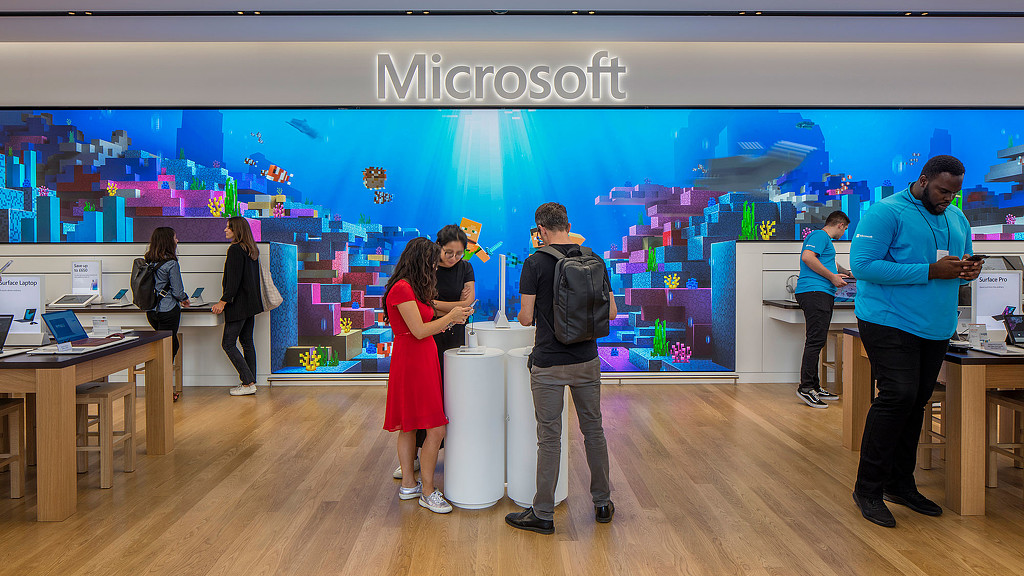What the Workplace Sector Can Learn From Retail’s 20+ Years of Designing Hybrid Experiences
March 15, 2022 | By Lara Marrero
It’s not a secret that when it comes to digital’s disruption of place, retail is an industry that finds its name in lights. Over the past 20 years, I can recall countless headlines predicting the demise of physical retail due to e-commerce; however, the industry has continued to evolve and many brands are emerging stronger than ever. As businesses grapple with the shift to a more fluid workstyle like hybrid or flexible work, the office sector can take a cue from the insights that the retail industry that has gleaned in designing compelling hybrid experiences over the past two decades that give consumers the power of choice and engage them wherever they are — online, on the move, and in person. Just as the retail sector has had to constantly adjust to consumers’ changing needs to reinvent engagement across all channels, so too will offices need to adapt to workers’ evolving behaviors in order to stay relevant.
There has been a long-perceived battle between physical and digital, and as the various digital channels have increased — shopping from websites, social media channels, gaming, and now metaverse, if there is one thing the retail industry has learned, it is that the experience is nonbinary. It is not physical vs. digital, it is a fluid and hybrid experience, and as we’ve learned, it is a human-centered experience — meeting the customer where they need the brand to be, whether it be to inspire, solve a need, or to feel like they belong to a community of like-minded people.
Now, as we enter the “age of belonging,” retailers are finding that it’s no longer enough to deliver a unique, “instagrammable” experience. As our workstyles and lifestyles become increasingly intertwined and traditional 9-to-5 paradigms are increasingly upended, the places we spend time need to evolve to reflect these changing needs, and brands need to also recognize that the role that they play in the lives of both their employees and customers, must also evolve. The purpose of physical space is to drive engagement purpose and align with issues that matter to people and their communities.
The office is at a pivotal point in its evolution. In an increasingly hybrid world, offices, retail stores, and other physical places need to bring people together and create a community where people feel they belong.
Here are four lessons that the office sector can take from retail in designing hybrid experiences:
1. Choice matters.
Retail has been adapting to the hybrid experience mode for more than 20 years, empowering consumers with the choice of shopping across any platform — online, apps, social media, video games, bricks and mortar, pop ups, events, and even bringing a mobile store to where you are. Successful brands know that giving customers choice and valuing their time leads to loyalty that pays back in dividends.
Digital technologies have allowed us to use physical space in new and exciting ways. Just as hybrid shopping experiences give consumers more choices for when and where to shop, the shift to hybrid work gives the office worker an unparalleled level of choice in when and where to work. Give your employees a variety of platforms to meet them where their needs are — both in and out of the office, or at third places such as coworking spaces or coffee shops. Allowing people to have power of choice shows you understand their behaviors and you value their time.
2. Drive purpose and relevance of place.
Perhaps the most important thing we’ve learned about physical retail is that it can create relationships between the employee, brand, and consumer. How does that translate into physical space for an office? An office is a brand. An employer is a brand. To attract and retain the best talent, organizations must find ways to enrich workers’ lives and communicate their brand values and culture in physical environments.
The purpose of place needs to engender a sense of culture and belonging. If people can now do anything anywhere and our workstyles and lifestyles are converging, brands and employers need to create purpose and relevance of place to give workers a reason to return to the physical office.
For example, Rapha has cultivated a sense of belonging with a hyper focus on their consumer. Rapha stores have become a place where cycling enthusiasts can meet up with a community of like-minded consumers, buy products, or become part of a cycling club.
Nike’s House of Innovation offers customized, participatory experiences, such as an Expert Studio where shoppers can work with specialists to customize their clothing, or an interactive gaming destination. The digitally connected and immersive retail concept aims to build community linked to each of its locations and the global community of sport. The brand is also launching different types of community-centered activations, such as the NikeLab Chicago Re-creation Center, designed to empower youth through hands-on workshops, giveback programs, and more.
Employers can take a cue from these brands to create a compelling narrative around the office and curate spaces that give rise to authentic and meaningful interactions to better serve their communities.
3. “Test and learn” and embrace adaptability and flexibility.
Across industries, many organizations are reexamining their real estate portfolios. In the face of uncertainty, successful retailers have embraced flexibility and adaptability to respond to changing consumer needs without incurring significant capital expenditures. Instead of signing 10-year leases that used to be standard practice, some developers are embracing short-term leases as they work to reposition their assets.
Retail brands are changing what they value and how they measure performance — they’re armed with data, and they know exactly who their target customer is. The entire market needs to get smarter around what the purpose of place is in order to deliver salient information for brands to better understand and engage with their consumers.
Office occupiers might take a similar “test and learn” strategy approach. For example, pilot spaces are a low-risk, high-reward solution to test, experiment, and glean data-driven insights. There’s no one-size-fits-all solution; strategies need to be customized for the people and brands you’re interacting with.
4. Attract and defend the best talent.
Whether you’re a workplace tenant or an amenities tenant, you’re trying to attract the best talent and defend the talent you have. We’re looking at how to design and reposition buildings to look at a mix of uses that provide a place where people can maximize their time, and where belonging is happening — not just within the lease line, but within the broader community. Rather than just designing and programming for traditional 9-5 business hours, think about how spaces can change to meet people’s needs throughout the day.
For example, Gensler worked with a developer, Charter Hall, in collaboration with Cox Architecture, to design a new 35-story tower at 555 Collins Street in Melbourne’s Central Business District. The tower offers a connected and engaging workplace experience that enhances the user experience, comfort, and wellness, and anticipates the needs of the future workforce. A portion of the building focuses on activation and has a day-to-night cadence. People’s lifestyles and workstyles in this building merge in an authentic way. You feel like this is a place where you want to be, and anywhere you want to be is encouraged.
As we look ahead, the workplace can learn a lot from retail. Determining how to attract people to a central place where they’ll want to engage with one other and the brand will be critically important to the future of the office and the brand environment. Both industries are changing dramatically, and so is customer behavior. We need to understand it, participate in it, and figure out what’s next.
For media inquiries, email .

